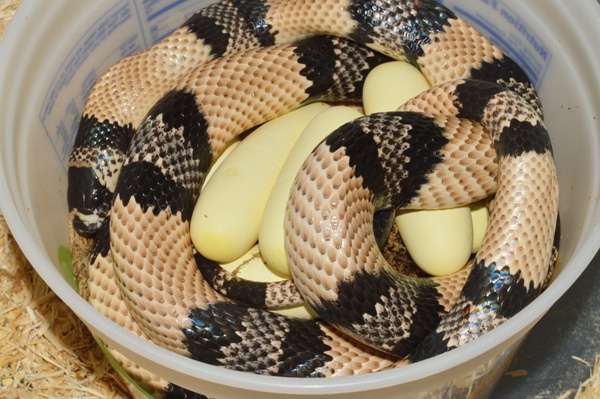
Description:
Scientific name: Lampropeltis triangulum hondurensis
Life span: Around 20 years
A non-venomous subspecies of the colubrid snake family called the Honduras milk snake is called Lampropeltis triangulum hondurensis. The base color of the Honduras milk snake is red, with prominent bands or rings of black and yellow. The animal in issue is known as a tangerine phase when the apparent yellow color is actually a vivid orange. One of the bigger milk snake subspecies is the Honduran milk snake, which may grow up to 48 inches long in the wild and up to 5 feet long in captivity.

Native Region/Habitat
The tropical low- to medium-elevation regions of Honduras, Nicaragua, and northeastern Costa Rica are home to the Honduran milk snake.
Behavior:
In addition, they are larger and friendlier than many milk snakes. These snakes are renowned for mimicking the behavior and markings of the poisonous coral snake. They trick potential predators into thinking they are dealing with a deadly animal by mimicking them, and as a result, they are left alone. Milksnakes move jerkily and quickly to cause their bands to flash, alarming predators. These snakes are challenging to track because of their vivid colors, which warn danger and frequently perplex predators.
Care As a pet/In captivity:
- For the first several months of their existence, it is ideal to maintain hatchlings in plastic tubs or flat faunariums that are about 12-16 inches (30-40 cm) length. They have the benefit of maintaining humidity effectively and costing little to repair when expanding in size.
- Adults eventually require an enclosure that is 36 inches long, which can be a plastic tank, tub, or vivarium. Whichever you choose, as long as it maintains the warmth and yet has sufficient ventilation, is irrelevant.
- Feed pinky mice to hatchlings every five days until they are three months old. Feed larger prey beginning at 3 months, but only once every 7 days. Every 7–10 days, two adult mice or one tiny rat can be fed to average adults. The metabolism can slow down significantly in animals above the age of 10, so I advise feeding them every 10–14 days at this stage to prevent obesity.
- For optimal shedding, keep the humidity in the 50–60% range.
- The suggested warm spot is between 88 and 90 degrees Fahrenheit (31-32 degrees Celsius), and the easiest way to achieve this is by placing a ceramic heat emitter or a heat pad above a hide. Keep in mind that in order to avoid burns, you must always employ a protective guard with heat emitters. If utilizing a heat pad, make sure it covers around 40% of the enclosure’s underside; this will produce a sufficiently sizable warm region while still leaving space for a temperature gradient.
Table





